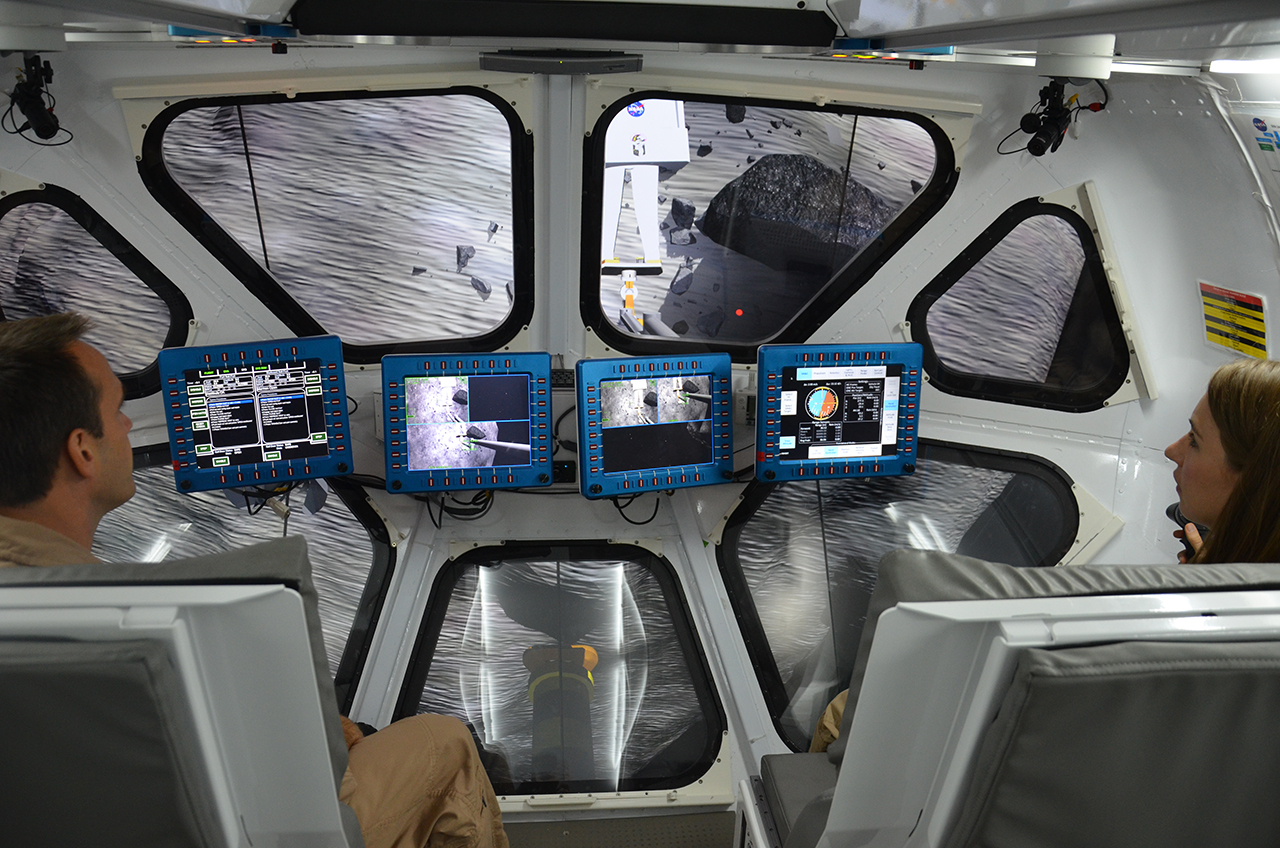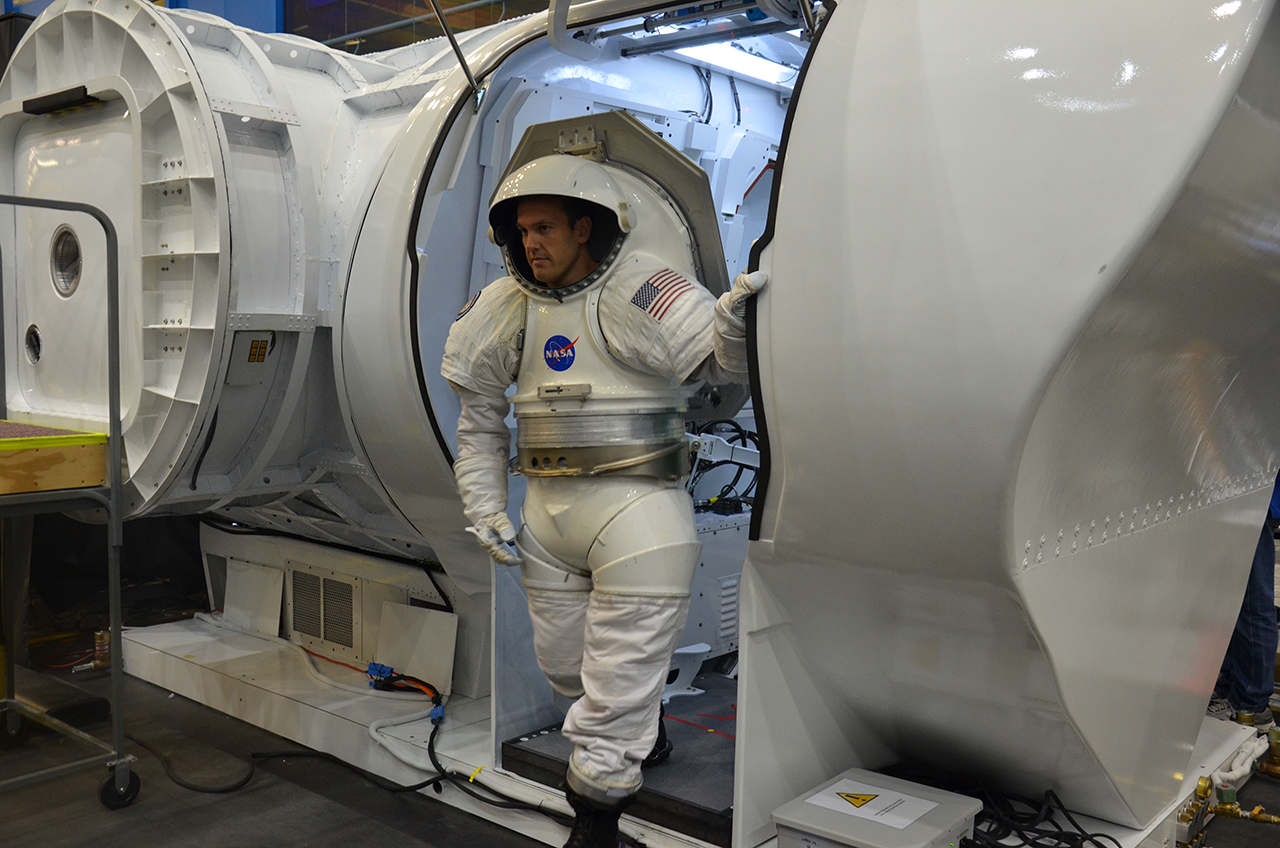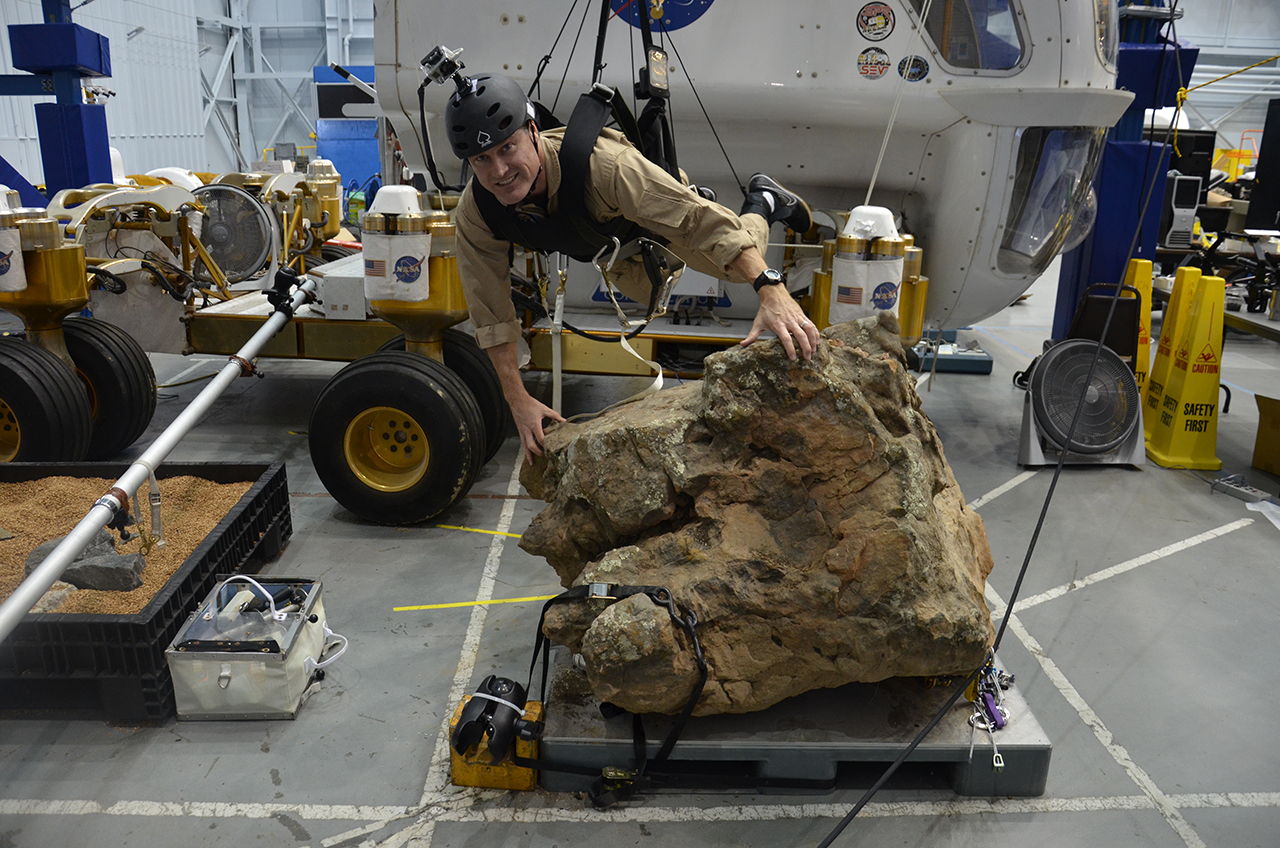NASA Simulates Asteroid Mission for Potential 2025 Flight

HOUSTON — NASA’s plans to send astronauts to an asteroid by 2025 moved 10 days closer to being a reality this week, even though the target of that mission has yet to be found in space.
The agency’s Research and Technology Studies’ (RATS) 10-day simulated asteroid mission, which ended Wednesday (Aug. 29), involved scientists and flight controllers at NASA’s Johnson Space Center in Houston evaluating new operations and exploration techniques for how astronauts might work above and on the surface of one of the small, rocky, solar system bodies.
The test used a variety of simulation technologies, including virtual reality and a custom rig that helped recreate the microgravity environment found at an asteroid.

Potential manned mission
President Barack Obama set the goal for a 2025 asteroid mission during remarks he delivered two years ago at NASA’s Kennedy Space Center in Florida. Earlier this week, he restated that aim during a question and answer session on the website Reddit.com.
“As we continue work with the International Space Station, we are focused on a potential mission to [an] asteroid as a prelude to a manned Mars flight," Obama said. [Photos: President Obama and NASA]
The president’s use of “potential” to describe the asteroid mission may have been in recognition of the scientific and engineering challenges that NASA has already encountered in early planning for such an endeavor.
Get the Space.com Newsletter
Breaking space news, the latest updates on rocket launches, skywatching events and more!
“Going to an asteroid was a bigger step than I think we thought, because it is a very challenging mission to do,” astronaut Michael Gernhardt told SPACE.com.
In addition to the uncertainty created by changing budgets and still-to-be-decided launch vehicle designs, the space agency has yet to find any candidate asteroids that pass close enough to allow for a roughly 90-day mission.
“The real problem with these near-Earth asteroids is Mother Nature is not really cooperating with us,” John Gruener, a planetary scientist at Johnson Space Center, told SPACE.com. “We haven’t found any that are close enough and are low enough inclination.”
“We would like to find near-Earth asteroids that are in the ecliptic plane and that come in at slow enough velocities so that our [spacecraft] velocities don’t have to be amped up to meet it. But we haven’t found one of those yet,” he said.
Ideally, said Gruener, an infrared telescope could be deployed into an orbit that trails Venus around the sun, providing a better chance at finding and tracking candidate near-Earth asteroids. Once a potential target is found, a robotic precursor mission could offer an up-close look at the asteroid, to better refine the types of tools and hardware needed for a crewed excursion, he said.
Space rock planning
Still, planning for such a mission is moving forward as NASA considers how best to conduct its first crewed flights beyond low Earth orbit since the Apollo moon landings ended in 1972.
This week’s simulated mission was centered on NASA’s multi-mission Space Exploration Vehicle (SEV), a modular cabin that can be maneuvered through space using thrusters or on a planetary surface by being mounted to a wheeled chassis. As currently planned and simulated, the SEV would not land on an asteroid but would support spacewalking astronauts exploring the rocky body’s surface.
To simulate this on Earth, NASA has built a mockup of the SEV, which it has placed atop an air-bearing floor that works similar to a very large air hockey table. The vehicle’s “pilots,” who took turns living in the SEV for 3 days and 2 nights during the simulation, could see the asteroid out the cabin’s large forward windows through the use of a video wall that contoured around the vehicle while displaying computer-generated images of the surface they were “flying” around.

Simulating the surface
When it was time for the simulation’s astronaut-stand-ins to practice working on the asteroid itself, the test split into three areas. At the SEV mockup, the participants could exit the vehicle using an integrated suitport, an alternative to an airlock that employs rear-entry spacesuits that form a seal with the vehicle. [NASA Deep-Space Vehicle for Asteroids (Photos)]
Once outside the SEV, they could practice working on the asteroid using one of two simulation methods.
At Johnson Space Center’s virtual reality lab, the participants donned goggles and gloves to then be inserted into the simulated asteroid scene that was projected out the SEV’s windows. Or, they could be suspended in the center’s Active Response Gravity Offload System, or ARGOS, which used a crane and harness to offset their weight while being suspended above boulders, rocks and an SEV cabin.
The simulation extended to Johnson’s nearby Mission Control Center, where communications between the scientists and flight controllers were delayed by 50 seconds in either direction to mimic what astronauts working at an asteroid would experience.
Advanced demonstration
The test also deployed two technology demonstrations. An advanced fuel cell similar to the type used during the 1960‘s Gemini missions was used to power the SEV mockup during the test, and a water processing module converted water generated by the fuel cell into its component hydrogen and oxygen gases to demonstrate in-situ utilization.
The simulation, together with past year’s RATS missions staged in the Arizona desert and work at an underwater laboratory, has given the team confidence that an asteroid mission could be in our near-future.
“I am feeling very comfortable that our desert work, this sim, and then NEEMO 16, which we just completed in June where we actually built an underwater asteroid ... [is giving us] a pretty darn clear idea on how we can do this mission, and we have that knowledge years and years before we are going to go there,” Gernhardt said.
Robert Z. Pearlman is the editor of collectSPACE.com, the leading online space history publication and a SPACE.com partner. You can follow @collectSPACE on Twitter or on Facebook. Follow SPACE.com on Twitter @Spacedotcom and on Facebook.
Join our Space Forums to keep talking space on the latest missions, night sky and more! And if you have a news tip, correction or comment, let us know at: community@space.com.

Robert Pearlman is a space historian, journalist and the founder and editor of collectSPACE.com, a daily news publication and community devoted to space history with a particular focus on how and where space exploration intersects with pop culture. Pearlman is also a contributing writer for Space.com and co-author of "Space Stations: The Art, Science, and Reality of Working in Space” published by Smithsonian Books in 2018.In 2009, he was inducted into the U.S. Space Camp Hall of Fame in Huntsville, Alabama. In 2021, he was honored by the American Astronautical Society with the Ordway Award for Sustained Excellence in Spaceflight History. In 2023, the National Space Club Florida Committee recognized Pearlman with the Kolcum News and Communications Award for excellence in telling the space story along the Space Coast and throughout the world.









